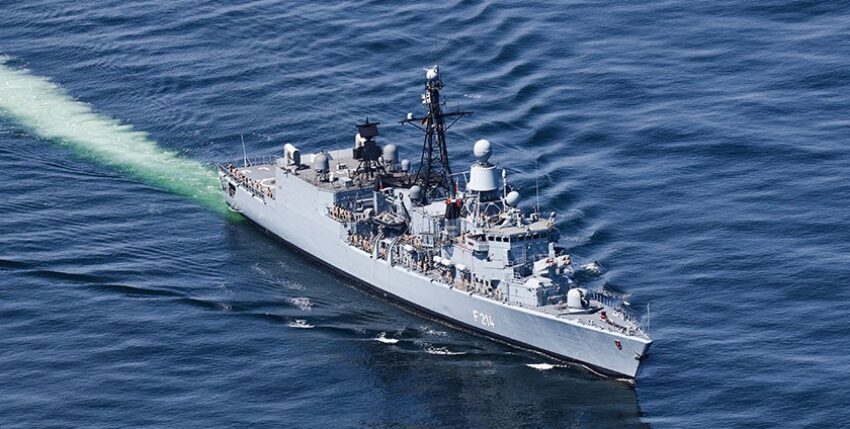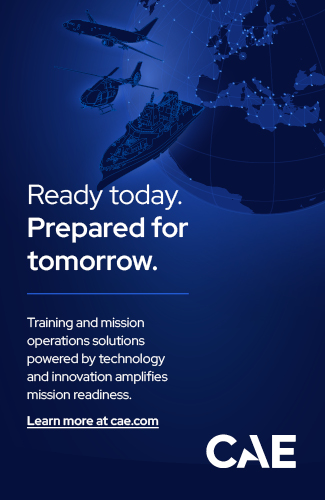In her last two years of service, the frigate LÜBECK performed remarkably well. The men and women on board accepted considerable restrictions in order to take part in the NATO support mission.
In January 2022, the frigate LÜBECK departed for the border area between Greece and Turkey as part of Standing NATO Maritime Group 2 (SNMG 2) to participate in the NATO Assistance Aegean (NAA) mission in the Aegean Sea, having already been deployed from May to September of the previous year. Since then, it has contributed to situational awareness and the exchange of information in dealing with the migration crisis. In total, the LÜBECK was deployed for more than nine months in 2021 and 2022 on this mission-equivalent obligation. NAA is formative for the Navy, especially for the Operational Flotilla 2 (EF 2). EF 2 thus bears the main burden of a commitment that is politically and diplomatically explosive due to the ongoing migration and local tensions, but is suspected of being at least partially at odds with the tactical and operational requirements and capabilities of the Navy for national and alliance defence (LV/BV). In addition to participating in NAA, the LÜBECK and its predecessor units were designated as Very High Readiness Joint Task Force (VJTF) units.
The migration flows in 2015, which brought more than one million refugees to Europe, made the call for sustainable security at the EU's external borders loud and clear. According to Eurostat, between 1.2 and 1.3 million asylum applications were submitted in the EU in 2015, 467,649 of which were in Germany alone.
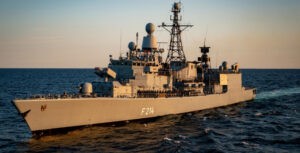
Around 850,000 refugees took advantage of the special geographical conditions in the Aegean. Greece and Turkey have key roles to play in this crisis, as the border region in the Aegean, with its many islands and short distances, facilitates illegal migration by sea.
This operation is formally based on the decision of the NATO defence ministers on 11 February 2016, according to which troop deployers are to work together as a NATO unit with the EU border protection organisation Frontex and the national coast guards of the neighbouring countries in order to participate in international efforts to counter illegal migration and human trafficking in the Aegean. This is a support mission - the deployment of German ships to the Aegean is not a mandated operation, but participation in SNMG 2. This explicitly does not include actively pushing back refugee boats or sea rescue. However, the requirements for providing assistance at sea in accordance with the Solas Convention (Safety of Life at Sea) remain in force, although the unit then acts under national Opcon.
Germany as a mediator
Due to political tensions, Germany is also taking on the role of mediator. Smaller Turkish and Greek units are subordinate to the German Commander Task Unit (CTU) 01, whose staff on board the German flagship consists of liaison officers from neighbouring states and Frontex. The units of the Task Unit (TU) operate relatively autonomously in their own coastal waters of the operational area, in accordance with the tasking by the CTU.
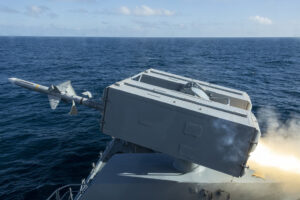
The core of the SNMG 2 around the flagship of the Commander SNMG 2 operates as TU 02 in the entire Mediterranean region. It is part of the VJTF of the NATO Response Force (NRF). As NATO's response to Russia's war of aggression against Ukraine, the organisation and subordination of the forces were adjusted. NATO activated its Graduated Response Plans (GRP) in order to better and more decisively counter the threat to the Alliance's territory. The sea area and the mission of the NAA remain basically the same, but the current developments have changed the circumstances. TU 02 is now subordinate to Commander Task Force (CTF) 441 as part of the VJTF, while SNMG 2 TU 01 - and thus NAA - remains in place. The war in Ukraine has at times significantly increased NATO's presence in the Mediterranean, with ships from various nations relying on Souda Bay, as does the frigate LÜBECK. Due to the short distance to the theatre of operations and its excellent logistical infrastructure, the port is almost ideally suited. However, the exclusive reliance on Souda Bay is due to the pandemic; there are a number of attractive harbours in the area that can be called at - strictly subject to parity with the neighbouring countries. As a NATO harbour, Souda Bay is excluded from this necessity and is accepted by both Turkey and Greece as a neutral port of call. In the course of the operation - also due to the high utilisation of the NATO base in Souda Bay - the parallel support on the tank pier of the Turkish island of Uzunada in the approach off Izmir proved to be an excellent alternative for the supply of fuel. The approach is easy, the local support is excellent and highly professional, just like in Souda Bay. Uzunada is just inside the patrol area, so tasking does not have to be interrupted for a bunker stop. However, only the supply of fuel is guaranteed there.
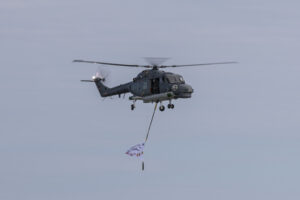
In the relatively short history of the commitment, there have been local, global and political changes that have had an impact on the situation on the ground: initially a steady decrease in migration movements (2019: 83,300 registered migrants, January to the end of May 2020: around 7,800) and a temporarily more relaxed relationship between Turkey and Greece. In the meantime, the Turkish side in particular has stepped up its efforts to prevent refugees from crossing the Aegean waters. The coast guards of both countries are present and active. Both sides are making extensive efforts to keep the situation on the ground stable and to minimise movements. The cooperation with the liaison officers on board the flagship has proven to be extremely productive and useful - the flagship provides a platform for exchange and cooperation between all key partners on the ground. In the event of an incident observed by the NAA unit, the coastguards are informed. Within minutes, the relevant coastguard then recognises the migrants, evacuates the rubber dinghies and takes the people to the respective coast for further proceedings. The NAA unit remains in the area, observing and providing support, if necessary, as soon as an emergency at sea arises. Non-governmental organisations (NGOs) could not be observed in the area of operation, as it is not easy for them to operate in the coastal waters of Turkey and Greece.
No "marine moments"
The coronavirus pandemic had a significant impact on migration at times. Restricted freedom of movement due to curfews in Turkey made it difficult for smugglers to organise themselves and use the coasts as a starting point for their boats to cross. As a result, migration movements have decreased significantly compared to previous years. However, the pandemic is also having an impact on the units on the ground. A lack of shore leave hinders regeneration and therefore potentially operational readiness. This has changed the reality of operations, but also the nature of seafaring itself.
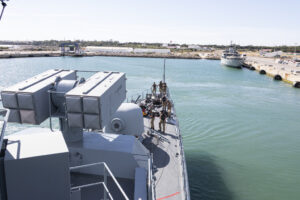
The typical "naval moments" - operating in a formation, discovering new harbours, briefly immersing yourself in a different culture - do not currently exist due to the prevailing rules. The situation is likely to ease once the pandemic situation stabilises and coronavirus infections no longer pose a fundamental threat to the operational capability of a unit. Especially on a class 122 frigate with its own cramped living conditions, it would be difficult to ensure the necessary isolation of affected persons in the event of an infection. The comprehensive containment of an infection can then no longer be guaranteed and the operational capability of the unit would be significantly jeopardised due to the restrictive measures in the event of infection.
Russia's attack on Ukraine on 24 February 2022 also marked a turning point for NAA. The frigate LÜBECK was no longer on Europe's periphery, confronted with declining migration figures, but in a geopolitical hotspot. This is not only a sea route of vital importance for the Russian Federation, but also a Sea Line of Communication (Sloc) worthy of protection for NATO allies and EU states. As a result, encounters with ships of the Russian Federation there take on a new quality. It has not yet been possible to discern any impact on migration on the ground. In coordination with Greece, Turkey and NATO, the mission in the Aegean Sea was maintained.
Even as a VJTF unit, and especially due to the changed situation, stringent training of the crew is necessary. Despite the support of Turkish, Greek and NATO-flagged ships, this is only possible with the greatest of efforts with the available resources. The availability of the partner units is limited due to the equally high workload, but the allies in the region nevertheless provide every opportunity for interaction and bilateral exercises. The frigate LÜBECK adheres to a strict internal syllabus for its own training, in which aspects of training from all areas are taken into account, be it operational, technical, nautical or medical. The effort required to prepare and conduct the training is enormous and ties up considerable resources. Plans for the sequence of operational scenarios from all three dimensions (air, sea, underwater) and the sequence and coordination with internal combat must be drawn up and implemented by a small team of instructors generated from the crew. This requires experience and prudence.
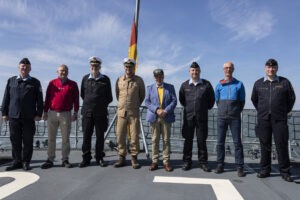
The operationally equivalent NAA commitment poses a challenge for the crews due to its contrary requirements to the actual capability profile of a combat unit. Maintaining operational readiness proves difficult to realise under the given circumstances. However, the commitment and dedication of the crews make it possible to master this task. With the restrictions imposed by the pandemic, the men and women who have taken part in NAA over the past two years have been put to the test: The lack of shore leave significantly limited their ability to regenerate. Nevertheless, the collaboration with the partners on site and on board is running smoothly and productively. Despite all the restrictions and challenges, this solidarity and cooperation has led to clear and tangible successes for the situation on the ground.
Frigate Captain Kai Röckel is the last commander of the frigate LÜBECK.
Kai Röckel

